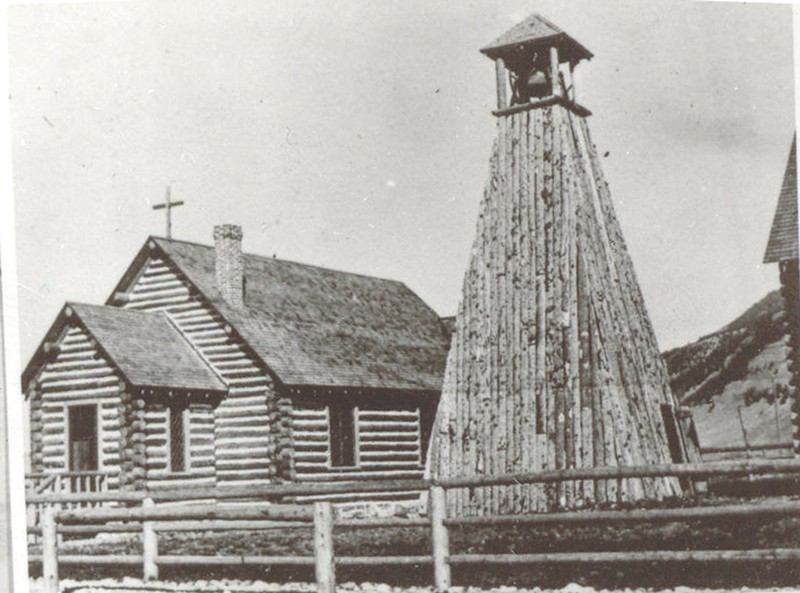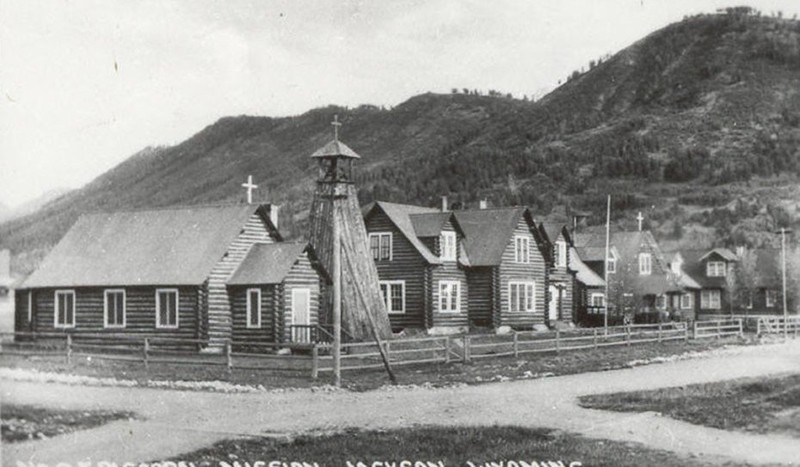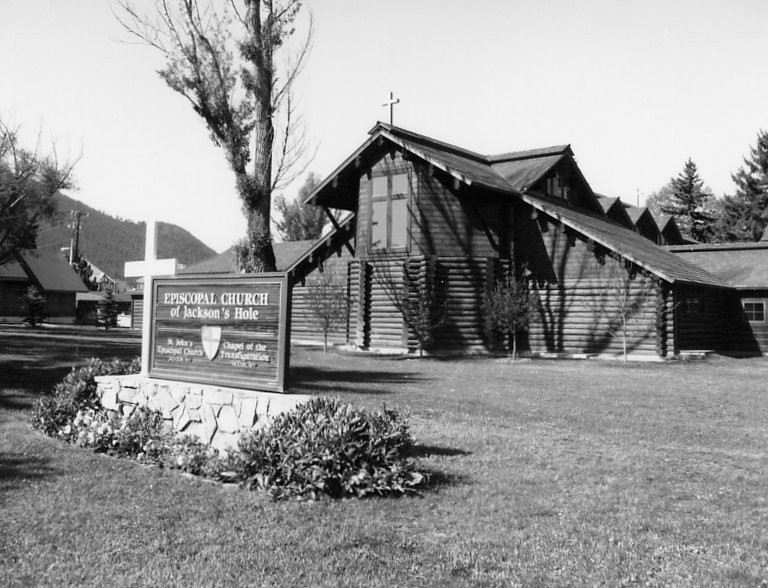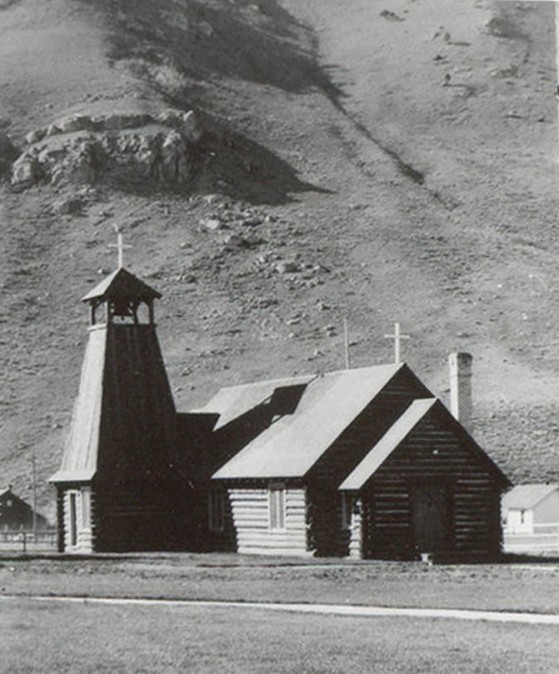St. John's Chapel
Introduction
Text-to-speech Audio
Jackson Hole’s rugged and remote geography meant that few reliable transportation routes were available prior to the 1910s. Those intrepid enough to make the journey were primarily large extended Mormon families looking for available land. The majority of the early churches were Mormon, and served the largely Mormon communities. In 1911 the first Episcopal building was constructed in the town of Jackson, just a block away from the developing Town Square. Today it’s known as the Rectory, but in 1911 the community called it the “Rest Home.” A small chapel was built in 1915 to house a growing congregation. Both buildings are still extant today on the St. John’s campus.
Images
St. John's Chapel and Bell Tower

St. Johns Chapel and Rest Home

St. John's Chapel, Rest Home, and Hospital

New St. John's Episcopal Church

St. John's Chapel Entrance on East

Backstory and Context
Text-to-speech Audio
When the St. John’s Rectory was built in 1911, it was the first Episcopal meeting space in Jackson Hole. At the time it was built, it was known as the “Rest Home” or “Hostel.” Though it was built by and for the Episcopal congregation, it was also a non-denominational space for the Jackson community. It also served as a meeting space for men’s and women’s groups, school, library, gymnasium, hospital, maternity ward, thrift store, priest housing, and church offices. It was also a place to stay overnight for ranchers who needed to come into town to do business or get supplies. For some, it was an all-day one-way ride, and necessitated an overnight stay. The building may be best known for operating as the first hospital space. For women living on remote ranches, having a safe and clean space to give birth was essential. The maternity ward was usually full, and women often stayed for several weeks anticipating and then recovering from birth.
With so many community needs being met in one space, it was a busy and lively building. In 1915, the congregation had outgrown the small chapel, and the space was needed to expand other areas. A new chapel was built next door to the Rest Home, and also allowed a quieter space for worship. Logs were brought onto the site and peeled that winter, and construction took place in July 1916. Butch and Ed Robinson completed the work with supplies from Billy Mercill who owned the mercantile, and Charlie Fox who owned a sawmill. Charlie Fox was also one of the valley’s most prominent builders at the time. Paul Imeson supplied the finishing work on the interior, and the church was consecrated on September 10, 1916. The building was originally oriented on Glenwood, with the entrance on the west side. In 1935 when the new hospital was built, the entrance was changed to the east to match the old Rest Home and new hospital.
In addition to the chapel, a bell tower was constructed alongside it. The interior space was used as the local ice house, but the melting ice softened the ground and the tower began to tilt. This was discontinued and the tower was repaired. Today the chapel is still open to the public, and holds special community events. The hospital was torn down and a new large church was built in its place in 1995. The design of the new church was chosen to carefully match that of the old Rest Home and Chapel. Today, St. John’s is a quiet green respite in the middle of a bustling downtown area.
Sources
"Our History," St. John's Episcopal Church of Jackson Hole. https://www.stjohnsjackson.org/our-history/
"St. John's and the Chapel of the Transfiguration," If Walls Could Talk Series. Jackson Hole Historical Society & Museum https://youtu.be/iY2TU4OrLH4?si=xhuWK_fBs-6l-zUi
Jackson Hole Historical Society & Museum
Jackson Hole Historical Society & Museum
Jackson Hole Historical Society & Museum
Jackson Hole Historical Society & Museum
Jackson Hole Historical Society & Museum
